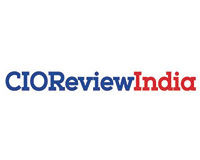At this time, they are looking for a partner that can protect their investments while providing cultural and change management support to enable business continuity and, at the same time, bring in innovation and integrating emerging technologies.
Where, conventionally, this role was essayed by large service providers, consequent to the pandemic, the mantle of partner of choice seems to have shifted to the mid-tier players. A recent industry report by IndustryARC accentuates this fact while disclosing that the global IT services market is expected to reach $1123.57 billion by 2025.
A large part of this growth will be driven by the deals and contracts won by mid-tier firms. So, what is it that the mid-tier players bring to the table that is turning the tide their way?
Change Drivers
Rapid decision-making, ability to align with customer’s organizational priorities, and pivot to the market dynamics seem to be some of the factors propelling mid-tier firms ahead of the large enterprises. Additionally, these firms are demonstrating strong leadership and flexibility in their engagement models, and attention to detail, with the management of the mid-tier player more accessible and closely involved in the various stages of the project. This is appreciated by the customers looking for higher intimacy through a partnership engagement model, rather than supplier relationship.
The deal clincher seems to be not monetary considerations but the ability of the mid-tier firms to deliver management focus and flexibility in the face of changing environment, making them more suited to partner enterprises in times of crisis.
This shift in preference, from large players to the mid-tier ones, can be encapsulated by a simple example: in case a large company wants to change a Managed Services Agreement (MSA), the process can take as long as a couple of weeks going through finance, legal and other departments. However, in case of a mid-tier firm, the change can be accomplished in less than a day. Today, the customers are looking to enter into quick, short deals, instead of long-drawn out multi-year relationships that take many months to set up. There is a growing need to simply get the work done, in the shortest duration, get quantifiable ROI, instead of getting entangled in complex and red-tapism that goes with large players.
A part of this mindset has been brought about the need to adapt to the new models of working, where that clients are not just looking at how fast or nimbly you adapt your own organization to the new normal, but the pace and manner in which you can help their business.
It is no longer ‘your ability to execute’, it is more about ‘your ability to execute based on my need to consume the service’.
The earlier approach of engaging with client was based on the requirement they had given you and your tailoring them as you go along. However, today the conversation is more consumer focused, and how you can service the customer in a more staggered and flexible way that will really enable customer to gain maximum advantage from the engagement. It really also boils down to weaving in processes, culture, policies, people expectations and so on.




